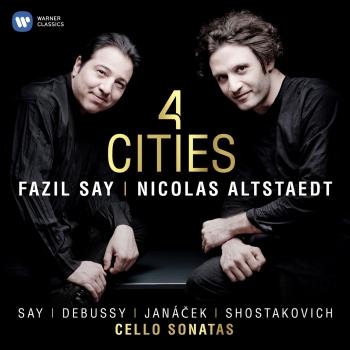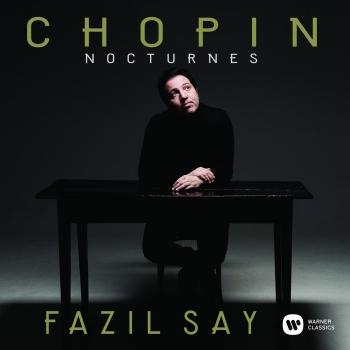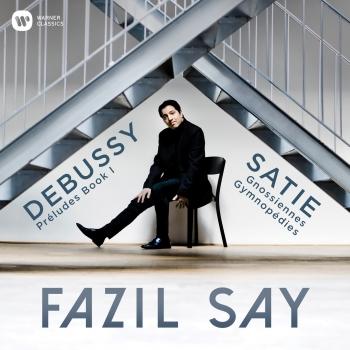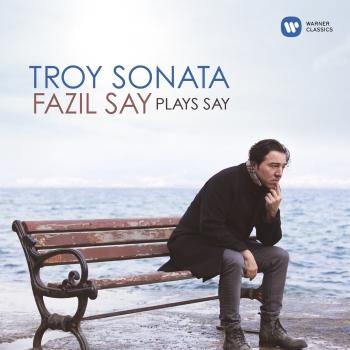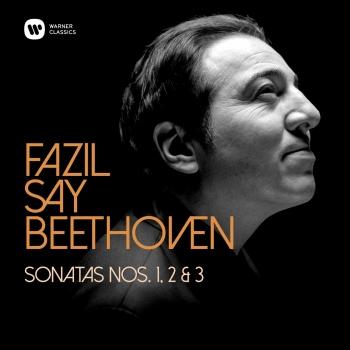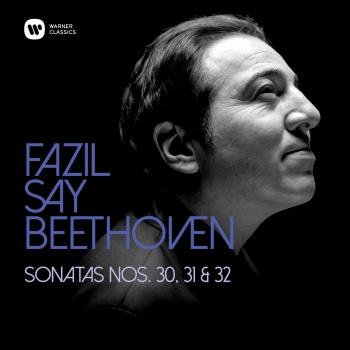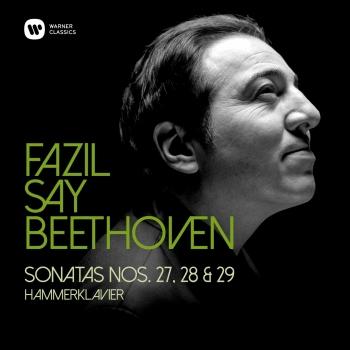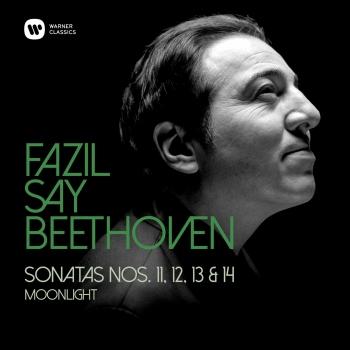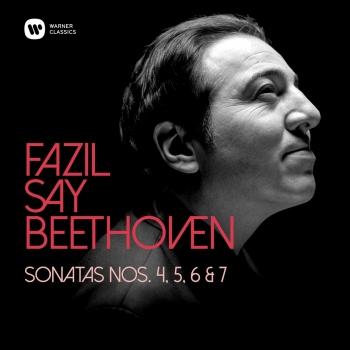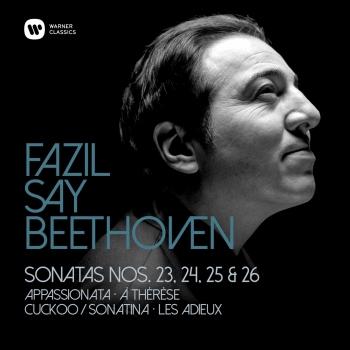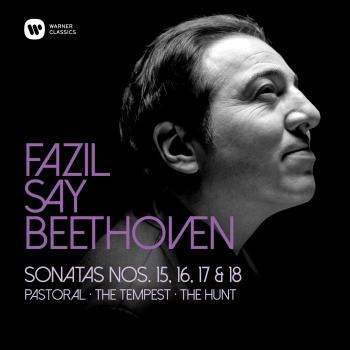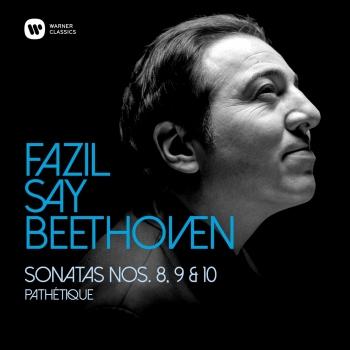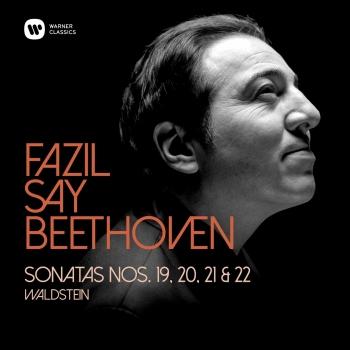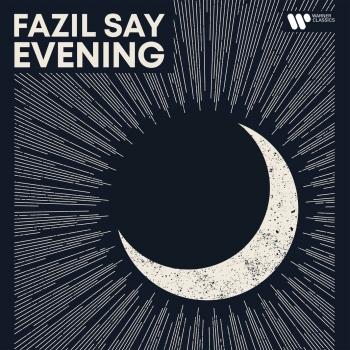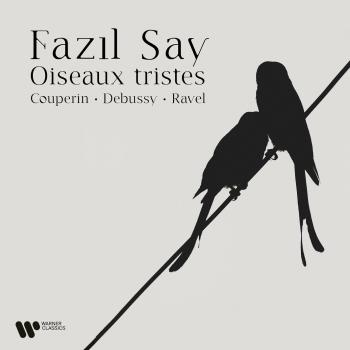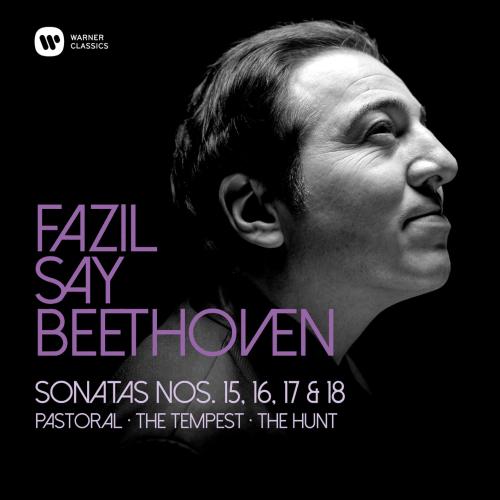
Beethoven: Piano Sonatas Nos 15, "Pastoral", 16, 17, "Tempest" & 18 Fazil Say
Album Info
Album Veröffentlichung:
2020
HRA-Veröffentlichung:
17.01.2020
Label: Warner Classics
Genre: Classical
Subgenre: Instrumental
Interpret: Fazil Say
Komponist: Ludwig van Beethoven (1770–1827)
Das Album enthält Albumcover
Entschuldigen Sie bitte!
Sehr geehrter HIGHRESAUDIO Besucher,
leider kann das Album zurzeit aufgrund von Länder- und Lizenzbeschränkungen nicht gekauft werden oder uns liegt der offizielle Veröffentlichungstermin für Ihr Land noch nicht vor. Wir aktualisieren unsere Veröffentlichungstermine ein- bis zweimal die Woche. Bitte schauen Sie ab und zu mal wieder rein.
Wir empfehlen Ihnen das Album auf Ihre Merkliste zu setzen.
Wir bedanken uns für Ihr Verständnis und Ihre Geduld.
Ihr, HIGHRESAUDIO
- Ludwig van Beethoven (1770 - 1827): Beethoven: Piano Sonata No. 15 in D Major, Op. 28, "Pastoral":
- 1 Beethoven: Piano Sonata No. 15 in D Major, Op. 28, "Pastoral": I. Allegro 08:11
- 2 Beethoven: Piano Sonata No. 15 in D Major, Op. 28, "Pastoral": II. Andante 08:41
- 3 Beethoven: Piano Sonata No. 15 in D Major, Op. 28, "Pastoral": III. Scherzo (Allegro vivace) 02:26
- 4 Beethoven: Piano Sonata No. 15 in D Major, Op. 28, "Pastoral": IV. Rondo (Allegro ma non troppo) 04:17
- Beethoven: Piano Sonata No. 16 in G Major, Op. 31 No. 1:
- 5 Beethoven: Piano Sonata No. 16 in G Major, Op. 31 No. 1: I. Allegro vivace 06:24
- 6 Beethoven: Piano Sonata No. 16 in G Major, Op. 31 No. 1: II. Adagio grazioso 11:20
- 7 Beethoven: Piano Sonata No. 16 in G Major, Op. 31 No. 1: III. Rondo (Allegretto - Presto) 05:44
- Beethoven: Piano Sonata No. 17 in D Minor, Op. 31 No. 2, "The Tempest":
- 8 Beethoven: Piano Sonata No. 17 in D Minor, Op. 31 No. 2, "The Tempest": I. Largo - Allegro 07:41
- 9 Beethoven: Piano Sonata No. 17 in D Minor, Op. 31 No. 2, "The Tempest": II. Adagio 06:17
- 10 Beethoven: Piano Sonata No. 17 in D Minor, Op. 31 No. 2, "The Tempest": III. Allegretto 05:46
- Beethoven: Piano Sonata No. 18 in E-Flat Major, Op. 31 No. 3:
- 11 Beethoven: Piano Sonata No. 18 in E-Flat Major, Op. 31 No. 3: I. Allegro 07:19
- 12 Beethoven: Piano Sonata No. 18 in E-Flat Major, Op. 31 No. 3: II. Scherzo (Allegretto vivace) 05:14
- 13 Beethoven: Piano Sonata No. 18 in E-Flat Major, Op. 31 No. 3: III. Menuetto (Moderato e grazioso) 04:11
- 14 Beethoven: Piano Sonata No. 18 in E-Flat Major, Op. 31 No. 3: IV. Presto con fuoco 04:35
Info zu Beethoven: Piano Sonatas Nos 15, "Pastoral", 16, 17, "Tempest" & 18
Marking Beethoven’s 250th birthday in a suitably heroic fashion, Fazıl Say has recorded Beethoven: Piano Sonatas Nos 15, Pastoral, 16, 17, Tempest & 18. He sees the sonatas as “a sacred text for musicians” and Beethoven as “A revolutionary composer starting to create music 50 to 100 years ahead of its time,” adding that: “When we interpret a composer’s work, we need to remain faithful to it. In other words, we need to feel like a composer. Compositions should be interpreted with the same freshness as a completely new piece of music that has just been created.”
“To date I have recorded 40 albums and composed 80 works. I have given around 3,000 concerts in various countries around the world. In the wake of all that I’d developed a desire to go beyond these achievements and do some of the very sincerest work I was capable of. That was how these recordings came about.
“There was an interesting new development during this recording process, in that I approached the playing with the mindset of a composer rather than that of a performer. When we interpret a composer’s work, we need to remain faithful to it. In other words, we need to feel like a composer. Compositions should be interpreted with the same freshness as a completely new piece of music that has just been created. To achieve this, we need to have a sense of what the composer imagined.”
“Two important imaginary creations”
“During my two years working on Beethoven, I came up with two important imaginary creations. The first was the ‘Fazıl Say Beethoven Orchestra’. I wanted to experience every piano sonata as though it were a symphony, to hear every sonata and every note in my mind, as though listening to an orchestra. I had imaginary rehearsals with this imaginary orchestra. Sometimes this imaginary scene was presided over by a conservative conductor, or one who was a manic Beethoven enthusiast; these imaginary rehearsals could be led by a wild Karajan or a sedate Furtwangler. They all directed my orchestra. We always held four-hour dress rehearsals for each sonata.
“I took another, even more fantastical approach. I played the sonatas to an ‘imaginary Beethoven’, who sat next to me, brimming with boundless energy and musical spirit. The imaginary Beethoven showed me his music, sometimes soothing me, sometimes wrestling with the dissatisfaction in my mind. This was the hardest and most unforgiving stage.
“Inside this imaginary world, I felt a need to prove myself. These imaginings ended with the start of recording in May 2017, and when sessions came to a close in May 2019, a strange weight lifted from me. I felt like I was in a huge void.”
“I devised my own personal leitmotifs.”
“Music should relate something, and the person relating it should make this narrative as clear as possible … This makes it important to assign names to melodies, to develop a way of working in which the performer devises leitmotifs. In this way it is possible to distance your thoughts from the mathematics of the text and instead to dramatise it.
“I devised my own personal leitmotifs for every theme of every sonata. For example, I came up with the ‘old man’ leitmotif for the heaviest section of the ‘Pastoral’ Sonata, the ‘distant drums of approaching warships’ leitmotif in the ‘Waldstein’, the ‘hopeless love’ leitmotif in Op.109, the ‘hope’ or ‘rebellion’ leitmotif in the ‘Appassionata’, and so on. I also gave names to some of the nameless sonatas, as I did when recording the Mozart cycle.
“A revolutionary composer starting to create music 50 to 100 years ahead of its time.”
“Together with Beethoven’s extraordinary mastery of all piano techniques, those who interpret his music must also take into account the things he did instinctively as a pianist. I want to hear Beethoven in the music.
“The works of Beethoven’s later period contain momentous steps towards Brahms, Wagner, Schumann and the composers of later generations. This is evident not just in the harmonic aspects and atmosphere of the works, but also in his voicing for the piano, which gradually takes on a more orchestral texture. I think the timbre of his last six sonatas has a very different tone to his previous ones. In fact, we can follow this development from the ‘Appassionata’ Sonata onwards. In my mind, it’s an orchestra that’s playing there. Particularly in the ‘Hammerklavier’ Sonata we can see a Beethoven making musical inroads into future eras, a revolutionary composer starting to create music 50 to 100 years ahead of its time.
“Music should be new every time it’s played. Each time a piece is performed, it should feel as though it has just been written. What matters is what we are saying and which feelings we convey to the human race. No one should say, ‘Beethoven played it like this, and everything else is wrong’. Beethoven would never have said that. Different interpretations are a composer’s delight.
Fazil Say, piano
Fazil Say
Mit seinem außergewöhnlichen pianistischen Können und tiefen Musikalität berührt Fazıl Say Publikum wie Kritik seit nunmehr 25 Jahren. Konzerte mit ihm sind direkt, offen, aufregend, sie treffen ins Herz. Eben das meinte wohl auch der Komponist Aribert Reimann, als er den damals 16-Jährigen während eines Besuchs in Ankara mehr oder weniger zufällig hörte. Auf der Stelle bat er seinen Begleiter, den amerikanischen Pianisten David Levine, ins Konservatorium der türkischen Hauptstadt zu kommen: „Den musst du dir anhören, der Junge spielt wie ein Teufel“.
Seinen ersten Klavierunterricht erhielt Fazıl Say bei Mithat Fenmen, einem Pianisten, der noch bei Alfred Cortot in Paris studiert hatte; den Feinschliff als klassischer Pianist erhielt Fazıl Say ab 1987 bei David Levine, zunächst an der Musikhochschule „Robert Schumann“ in Düsseldorf, später dann in Berlin.
Fazıl Say spielte mit sämtlichen renommierten amerikanischen und europäischen Orchestern und zahlreichen großen Dirigenten zusammen. Gastspiele führten Fazıl Say in zahllose Länder auf allen fünf Kontinenten. Dabei trat Fazıl Say immer wieder auch als Kammermusiker in Erscheinung. Mit der Geigerin Patricia Kopatchinskaja beispielsweise bildete er jahrelang ein Duo; weitere prominente Partner sind unter anderem Maxim Vengerov, das Borusan Quartet und Nicolas Altstaedt.
Fazıl Say ist auch als Komponist international erfolgreich und hat unter anderem Auftragswerke für die Salzburger Festspiele, den WDR, das Konzerthaus Dortmund, das Schleswig-Holstein Musik Festival und die Festspiele Mecklenburg-Vorpommern geschrieben. Sein Schaffen umfasst Kompositionen für Soloklavier und Kammermusik bis hin zu Solokonzerten und großen Orchester- und Chorwerken.
Fazıl Says Einspielungen wurden von der Plattenkritik hoch gelobt und mehrfach ausgezeichnet.
Dieses Album enthält kein Booklet












